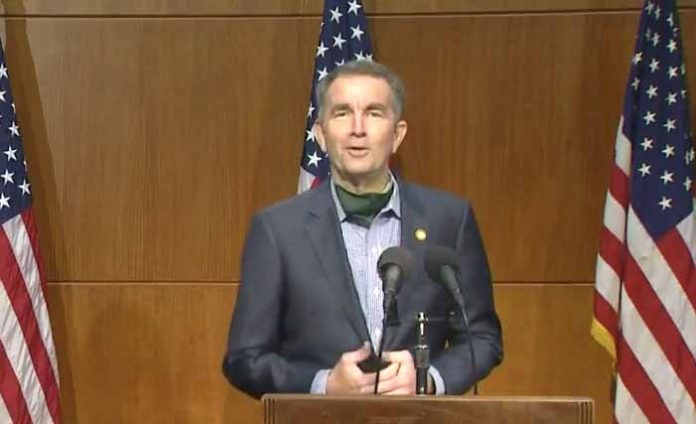By Stefanie Jackson – Virginia schools will being re-opening in phases, with social distancing guidelines and continued online learning opportunities in place to keep students and school staff safe, Gov. Ralph Northam announced June 9.
“To be clear, all Virginia schools will open for students next year, but the school experience will look very different,” he said.
When schools re-open their doors, desks will be six feet apart and teachers and school staff will be wearing face coverings when they cannot maintain social distance.
Students will be encouraged to wear face coverings, but they will not be required.
All students and staff will undergo daily health screenings.
Since social distancing will mean fewer students may occupy a classroom together, class schedules must be staggered, or schools must offer a combination of in-person instruction and remote learning to accommodate everyone, Northam said.
Remote learning and teleworking options must be provided to students and staff who have high-risk health conditions.
School cafeterias must stagger meal times or remain closed, meaning some students may have to be served breakfast and lunch in their classrooms.
No matter when schools decide to open their buildings or what classrooms look like in the future, all schools in the state will be required to deliver new instruction to students this fall, Virginia Superintendent of Schools James Lane said.
After the governor closed schools for the rest of the academic year March 23, schools began offering online learning and handing out homework packets along with free meals at distribution sites, but those lessons were review and were not graded.
“I believe that these closures have helped mitigate the spread of COVID-19 in our communities over the last few months,” Northam said.
All Virginia schools currently are in Phase 1 of re-opening, in which childcare is available to working families and students with disabilities may receive in-person instruction.
Most schools will be able to enter Phase 2 immediately, which allows in-person instruction for students with disabilities, English learners, and students in pre-K through third grade.
“We wanted to focus on getting education to our earliest learners because of the challenges that they were facing in the remote learning environment while also making sure that we can keep them safe,” Lane clarified.
School-based summer camps may also operate with restrictions in Phase 2.
Phase 3 will allow in-person instruction for all students, with social distancing and remote learning options also in place.
Before entering Phase 2 or Phase 3 of re-opening, schools must give the Virginia Department of Education plans outlining how they will comply with health and safety guidelines.
A school must wait at least two weeks before transitioning from Phase 2 to Phase 3, Northam said.
The guidelines are flexible to allow schools to re-open buildings at their own pace. There is no mandate to open for summer school.
“This approach to re-opening our schools protects and prioritizes the health and social, emotional, and physical well-being of students and staff as public health conditions evolve,” Northam said.
Lane also commented on public education in Virginia as related to recent concerns about racism and his pledge “to ensure that the color of a student’s skin doesn’t dictate the education opportunity that they have access to.”
“We’re going to have to do a better job of putting culturally responsive teaching practices into trainings for our teachers, into the standards and the way that we approach them, and building cultural competence for our educators to make sure that every child sees themselves in every classroom,” he said.
“We have phenomenal educators in Virginia that are doing this work already and we’ll continue to build upon that,” Lane said.
“I am committed to eradicating racism from our schools and communities.”
COVID-19
As of June 9, there were 487 new cases of COVID-19 identified in Virginia, for a total of 51,738 cases. There were 19 more deaths related to COVID-19 reported, bringing Virginia’s coronavirus death toll to 1,496.
Northam said the number of positive COVID-19 tests has trended downward over the last 14 days. About 10% of COVID-19 tests were positive. There have been fewer hospitalizations, and hospital bed capacity and supplies of personal protective equipment are sufficient.
Hiring contact tracers continues. Virginia has more than 870 contact tracers and a goal of hiring 1,200 total by July, or 15 contact tracers for every 100,000 people in the state.



